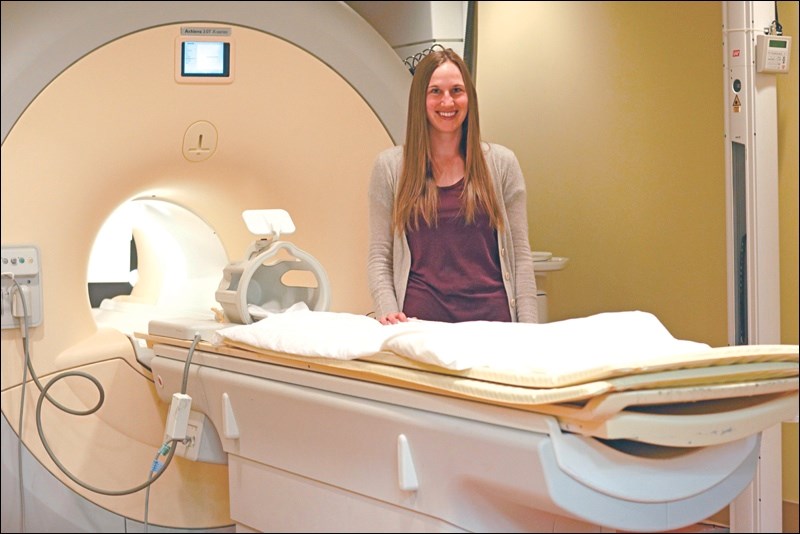How does an aspiring music teacher end up doing a PhD in neuroscience? For Flin Flon native Tiffany Carther-Krone (née Lazar), Canadian Mennonite University’s meal plan is part of the answer.
In 2004, when she moved on campus to study at CMU in Winnipeg, Carther-Krone enjoyed eating in the university’s dining hall.
To combat the “Freshman 15” – the extra 15 or so pounds that students sometimes gain during their first year at college – she started swimming at a local pool when she wasn’t taking music classes.
After two years of studying music and some experience substitute teaching in her hometown of Flin Flon, Carther-Krone realized a career as a music teacher wasn’t for her. She decided to pursue another one of her interests: mathematics.
In the meantime, her interest in swimming had led her to become a lifeguard. While taking an emergency medical responder course to supplement her ongoing lifeguard training, Carther-Krone developed a love for neuroanatomy – the anatomy of the nervous system – and the way the brain works.
She was able to pursue this interest in The Philosophy of Math, an interdisciplinary course she took during her fourth year at CMU.
“I studied artificial intelligence and how the mind could be potentially modelled as a machine, using mathematics to support my argument,” said Carther-Krone, who is currently working on a PhD in brain and cognitive sciences at the University of Manitoba. “I realized how much I wanted to continue learning about how the brain works.”
After graduating from CMU in 2008, she enrolled at the University of Winnipeg and went on to graduate with a Bachelor of Science (Honours) in biopsychology.
While working on her honours thesis, Carther-Krone did some brain imaging work using diffusion tensor imaging, or DTI.
Advisors at the University of Winnipeg connected her with professors at the University of Manitoba who shared her interests, and she began her master’s degree.
Carther-Krone’s master’s research looked at whether individuals with autism are able to group elements of their environment into a whole at a pre-attentive level – that is, before they’re even aware of it.
Today, as a PhD student, she is building on the research she did during her master’s using another brain imaging technique, functional magnetic resonance imaging, or FMRI.
FMRI produces a dynamic image that shows researchers which parts of the brain are activated when the subject is doing specific tasks.
“I’m really privileged that a lot of the research I do involves one-on-one time with my participants,” said Carther-Krone, adding that she has worked with a variety of different populations, including individuals with autism, elderly people and undergrad students.
After finishing her PhD, Carther-Krone hopes to become a professor and have access to brain imaging facilities so she can continue her work.
By the time she finishes her PhD, she will have been a post-secondary student for 16 years. Even then, it won’t have been enough learning to satisfy her curiosity.
“Even though I might graduate some day, I’ll still be a forever student,” Carther-Krone said.
This article originally appeared on the Canadian Mennonite University website. It is reprinted with permission.




